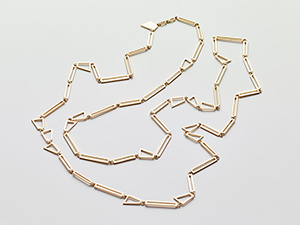

Boyce first engaged in 2005 with the Arbres Cubiste (Cubist Trees) designed by the French brothers Jan and Joël Martel. These concrete trees with cruciform cores stood more than four metres tall and were made for the 1925 Exposition des Arts Décoratifs et Industriels Modernes, a world fair held in Paris. Their foliage was flat, four-sided panels coming out from the centre; the abstracted leaves and branches echo Cubist shapes. Boyce has used and referenced the forms of the Martel trees repeatedly over the past decade, extending their lineage to the present day. By taking the tree shapes and laying them flat, Boyce generated a repeat pattern; a graphic forest. As well as a palette of shapes he unexpectedly discovered letters of the alphabet hidden within the lines of the pattern. He has applied this palette to sculptural objects and installations in numerous ways, such as chandeliers, stepping stones, vents and cut paper leaves that gather in drifts. The alphabet has appeared carved into tabletops or drawn in brass and mounted onto the wall. For GEMS AND LADDERS outlines of the concrete tree make the links in a gold chain. A vocabulary of 6 different forms makes an irregular pattern in an elegant design that quietly references its complex origins.

Martin Boyce (b.1967) grew up on the outskirts of Glasgow and studied at Glasgow School of Art; he is one of the key figures in the influential group of artists to emerge from that city in recent years, representing Scotland at the Venice Biennale in 2009 and winning the Turner Prize in 2011.